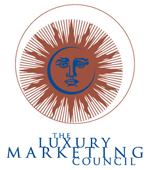Luxury and Public Perception
As featured in Collaborations: A periodic publication from The Luxury Marketing Council
Today’s definition of luxury is highly personal and based on the choices and decisions the affluent consumer makes.
While this may not sound any different from what the affluent have always done, today’s consumer is factoring in different parameters. Spending decisions are not singularly reflective of their financial position; they also take into account the perception their choices will create.
Yes, we are seeing a rise in spending in the luxury segment. Just this past week there were reports stating that with Wall Street’s continuing rally and the improving finances of America’s wealthy, luxury spending’s hot streak will stay alive in 2011.
We also finally see a pulse in the aspirational segment, which is breathing much-needed life back into what seemed like a ghost-town economy over the past few years. “The aspirational shopper is coming back because they like brands, but they’re still just putting their foot back in the water,” said Steve Sadove, CEO of Saks Inc.
However, while the top tiers of wealthy U.S. consumers are feeling more financially secure, few have come out of this turbulent financial cycle unchanged. Many have had to make difficult business decisions that have affected the lives of many people. And while they have been able to recover, they are not without sensitivity. This does not mean that these consumers are not buying. What it does mean is that they are spending on what is personally important and forgoing obvious opulence, recognizing that the “let them eat cake” mentality is simply not acceptable within today’s society.
Bain & Company’s Luxury Market Update: 2012 states that global luxury sales dropped by 10 percent in 2009 versus 2008, and that the luxury market could wait a couple of years more before seeing a full recovery.
Claudia D’Arpizio, a partner at Bain & Company and based in Milan, added that the “less is more” mentality that consumers are adopting now when buying luxury goods was a trend that began prior to the global economic slump. D’Arpizio’s report says consumers had started to move away from the “bling” trend-ostentatious jewelry and “it” handbags-in favor of more restrained items.
This points to those goods and services that have remained at the top of their game in terms of quality, craftsmanship, and customer appreciation, and illustrates why French luxury purveyors Hermes and LVMH were among the first companies to see sales soar after the financial crisis began to ebb. They have been able to justify their premium price tags against the mid- to long-term value of their products.
As luxury marketers, we celebrate these real signs of economic recovery and understand that the “new normal” must have a sense of quiet appreciation, dignity, and grace.
Hilarie Viener is Director of Communication and Strategic Initiatives at MDG. MDG of Boca Raton, FL and New York, NY, is an award-winning, full-service agency specializing in customized communications strategies. Our core capabilities include creative, digital marketing, media planning and buying, public relations, Web design and development and SEO. For more about us, please log on to www.mdgsolutions.com.

